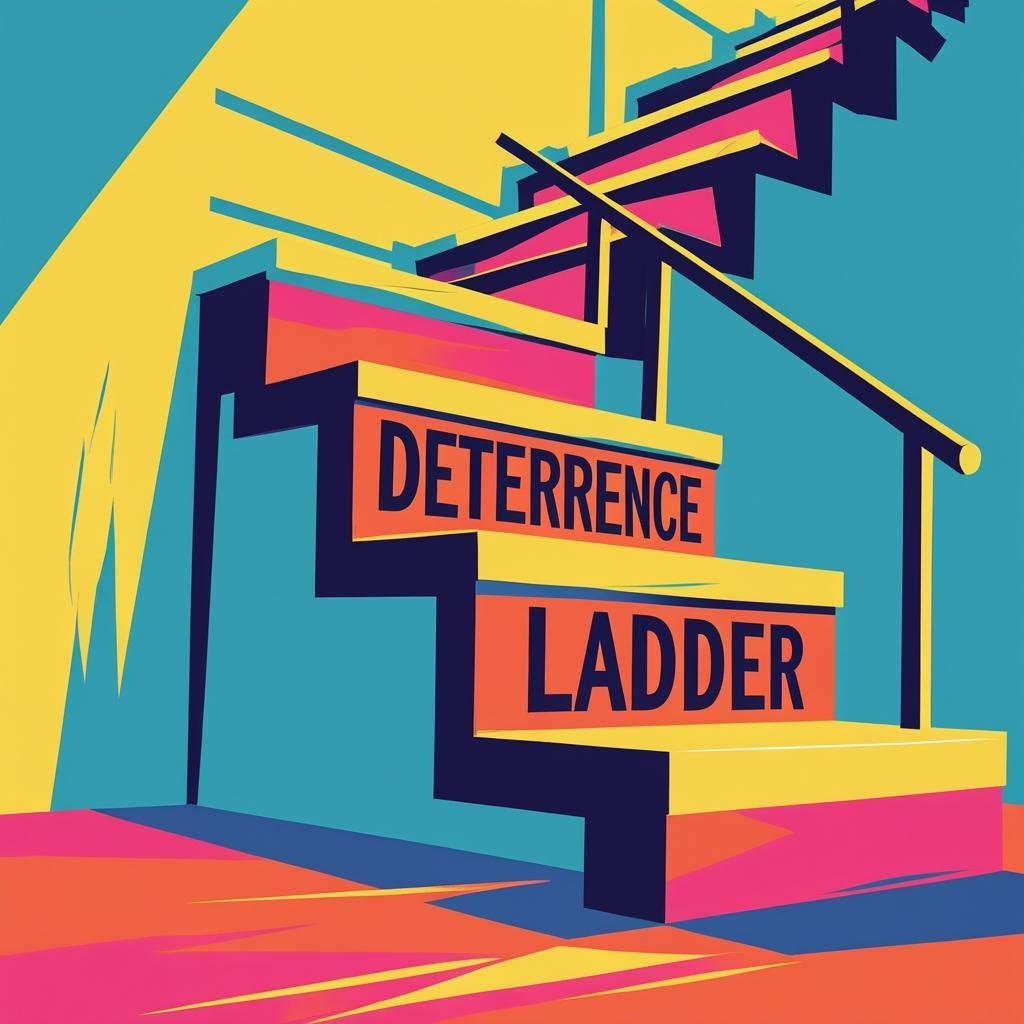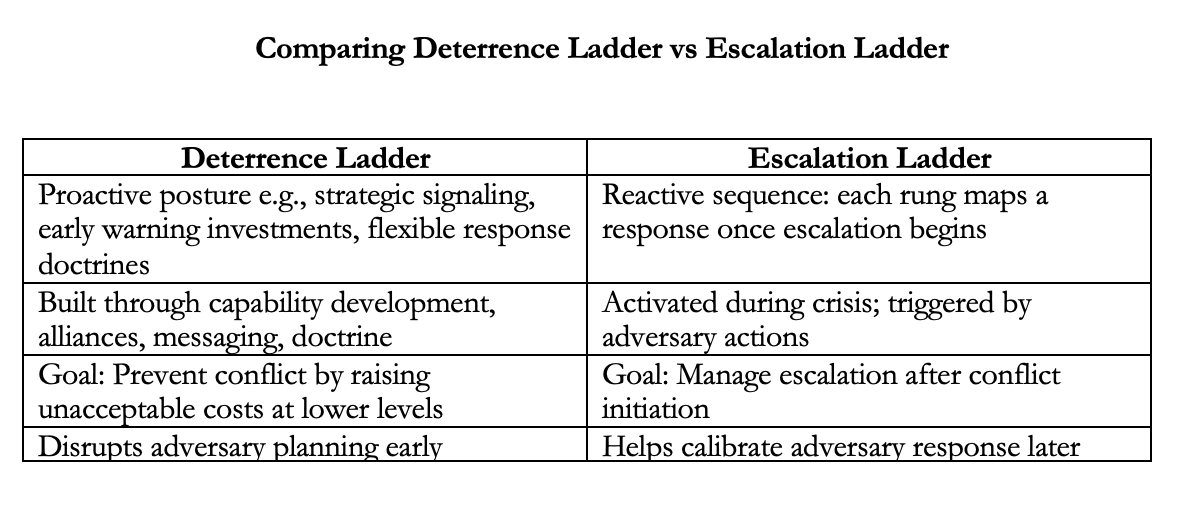If you are interested in issues of war, peace, nukes and strategy then you must have read most analysis focusing on the escalation ladder, the idea, originally from Herman Kahn of a multi-step progression from low-level tension to all-out nuclear war. You can further read some stuff here and some stuff here for your understanding of the escalation ladder.
Variants exist: detailed 44-step schemas, Russian adaptations, and newer models that emphasize domain-specific steps or escalation dominance .
But let me talk about the deterrence ladder, the proactive strategic choices that shape how a state positions itself to prevent escalation in the first place.
Why a ‘Deterrence Ladder’ Matters
It’s not enough to react
The escalation ladder maps responses, not foreplay. But deterrence requires initiative: capability development, signaling, alliance structures, or early public diplomacy, each a ‘rung’ that sets the adversary’s expectations.Deterrence ladders are proactive, escalation ladders reactive
The U.S. doctrine of escalation dominance, for example, builds multiple layers, conventional forces, BMD, theatre nukes, to hold off escalation before it starts. Read here about the false allure of escalation dominance.
On the other hand, in South Asia, Pakistan’s layered nuclear doctrine of full spectrum deterrence, is a crafted ladder of deterrence, aimed at making an all-out war very costly and unattractive for its adversary, India.
Deterrence ladders shape escalation
Just like constructing or removing rungs on the escalation ladder affects crisis moves, building or weakening deterrence rungs influences whether a crisis happens at all.
The concept of the 'Deterrence Ladder' complements the well-known 'Escalation Ladder'. While the escalation ladder maps the reactive sequence of actions during a crisis, the deterrence ladder focuses on proactive steps that states take to avoid conflict.
Why We Need to Talk About Both
Deterrence without the ladder concept is unsystematic; escalation without deterrence is crisis management without prevention.
Understanding deterrence as a ladder helps policymakers ask: Have we built enough layers to make aggression seem unattractive early on?
It also helps analysts watch for ladder gaps, not just errant rungs during conflict, for instance, gaps in cyber resilience or strategic ambiguity that precede crises.
Imagining Pakistan’s Deterrence Ladder
Since we are conceptualizing the Deterrence Ladder as a parallel structure to the Escalation Ladder but with the intent to dissuade, deny, or de-escalate, rather than to signal readiness for conflict, it demands creative rethinking of what Pakistan’s rungs would look like in this frame.
Here is my take that goes beyond weapons or war-preparedness. Each rung reflects a deliberate action meant to preserve deterrence credibility without triggering escalation, and aligns with Pakistan's strategic posture of credible minimum deterrence (full spectrum deterrence) and controlled signaling.
Why This Matters
In a post-May 2025 context, Pakistan's deterrence ladder becomes a strategic signaling framework, not just to India, but to the world, showing how deterrence can be active without being aggressive.
Parallel to Escalation Ladder
While escalation rungs climb toward confrontation, the deterrence ladder moves horizontally or downward to:
Reaffirm red lines without crossing them
Manage adversary expectations
Avoid accidental or misperceived escalations
We know escalation ladders well, but deterrence ladders are the unseen scaffolding. They are built through doctrine, posture, investments, diplomacy, and signaling. The missing conversation in strategic discourse is how to build, maintain, and upgrade that ladder so conflicts are deterred before rungs even come into play.









It's about time we have scholars with insights other than the rutted road to follow. Outstanding, keep it up
Yes ... Deterrence is based on what levels of new threats state is confronting and plug all gaps via proactive deterrence..that the deterrence model with new technologies